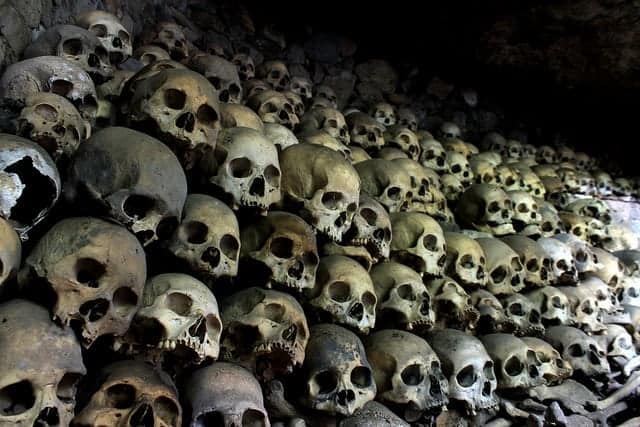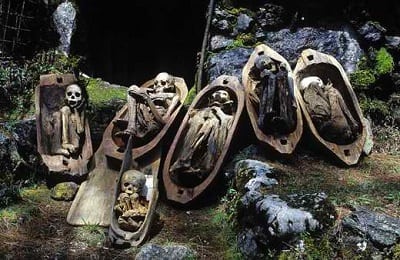The “Fire Mummies” of Kabayan Burial Caves

Kabayan, one of the municipalities of Benguet in the Cordillera Mountain Ranges, is home to a total of 200 man-made burial caves, 15 of which contain perfectly preserved human mummies.
The Kabayan burial caves are remnants of a colorful tradition and practices of the Ibaloi, a dominant indigenous group from the said municipality.
Mummifying process was based on social status
During the pre-Hispanic era, mummification was a rampant practice among the Ibaloi. The length and delicateness of mummification were determined by the dead person’s social status.
The body was usually first treated with salt and herbs. It would then set under fire for up to two years, hence the name “fire mummies”.
Once the body fluids completely dried up, the mummy was “placed inside a pinewood coffin and laid to rest in a man-made cave or in niche dug-out from solid rock.”
The “fire mummies” of Kabayan Burial Caves. (Source: www.niceworld.com)
Mummification was a traditional practice among the Ibaloi until the Spaniards entered the scene. When Christianity took over the whole mountain region in Benguet, practices of both mummification and cave burial were abandoned by the indigenous group.
A national cultural treasure
Through the proclamation of the Presidential Decree No. 374, the Kabayan burial caves officially became one of the country’s national cultural treasures.
It is known that the Ibaloi of Benguet was the only ethnolinguistic group in the country that practiced mummification during ancient times. Although the Bontocs of the Mountain Province shared the same practices, these are believed to be the only extension from Kabayan, Benguet.
FilipiKnow
FilipiKnow strives to ensure each article published on this website is as accurate and reliable as possible. We invite you, our reader, to take part in our mission to provide free, high-quality information for every Juan. If you think this article needs improvement, or if you have suggestions on how we can better achieve our goals, let us know by sending a message to admin at filipiknow dot net
Copyright Notice
All materials contained on this site are protected by the Republic of the Philippines copyright law and may not be reproduced, distributed, transmitted, displayed, published, or broadcast without the prior written permission of filipiknow.net or in the case of third party materials, the owner of that content. You may not alter or remove any trademark, copyright, or other notice from copies of the content. Be warned that we have already reported and helped terminate several websites and YouTube channels for blatantly stealing our content. If you wish to use filipiknow.net content for commercial purposes, such as for content syndication, etc., please contact us at legal(at)filipiknow(dot)net

